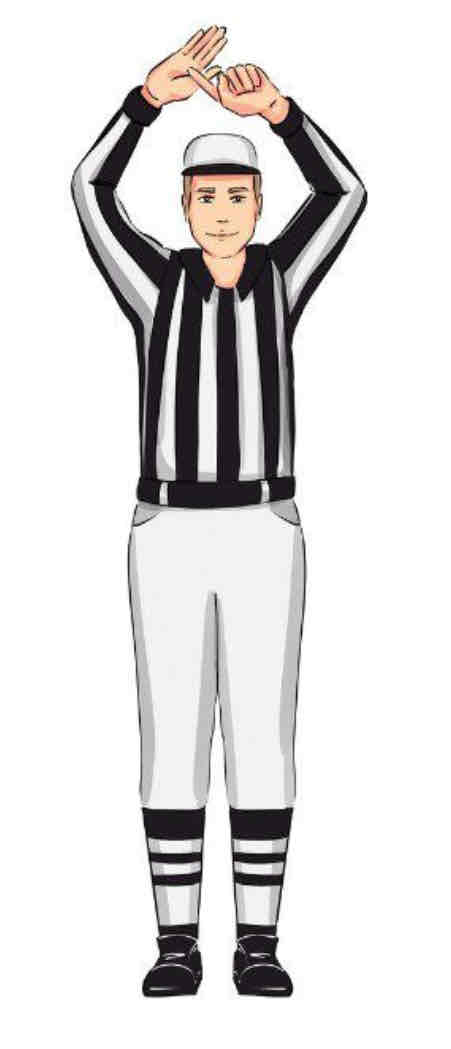basketball referee hand signals (copy)
1/24
There's no tags or description
Looks like no tags are added yet.
Name | Mastery | Learn | Test | Matching | Spaced |
|---|
No study sessions yet.
25 Terms
traveling
When a player illegally moves one or both of their feet.
The referee will put both arms in front of their face and move them in a circle to signal a traveling.
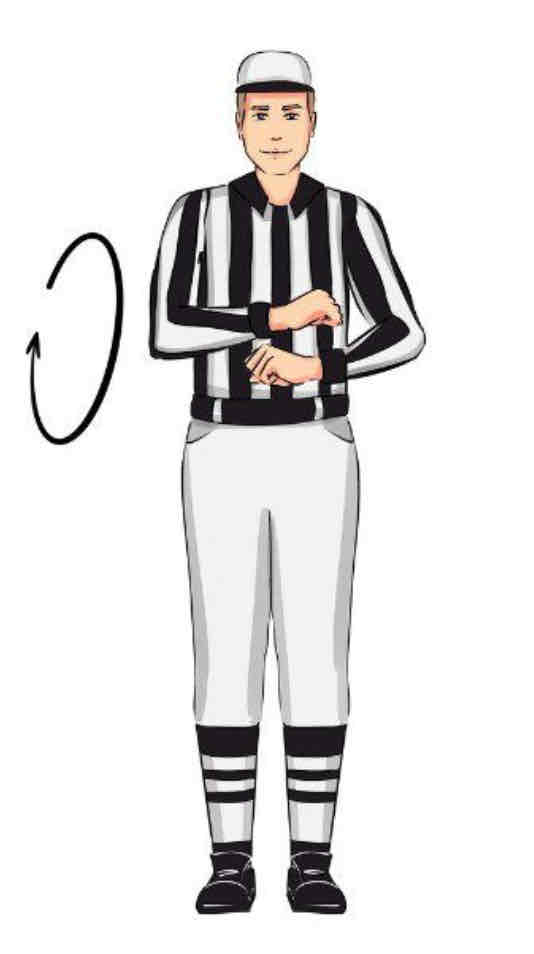
a double dribble occurs when a player dribbles the ball, picks it up, and then dribbles again.
The referee puts both of their hands in front of them with their palms down, then alternates moving them up and down to signal a double dribble has occurred.
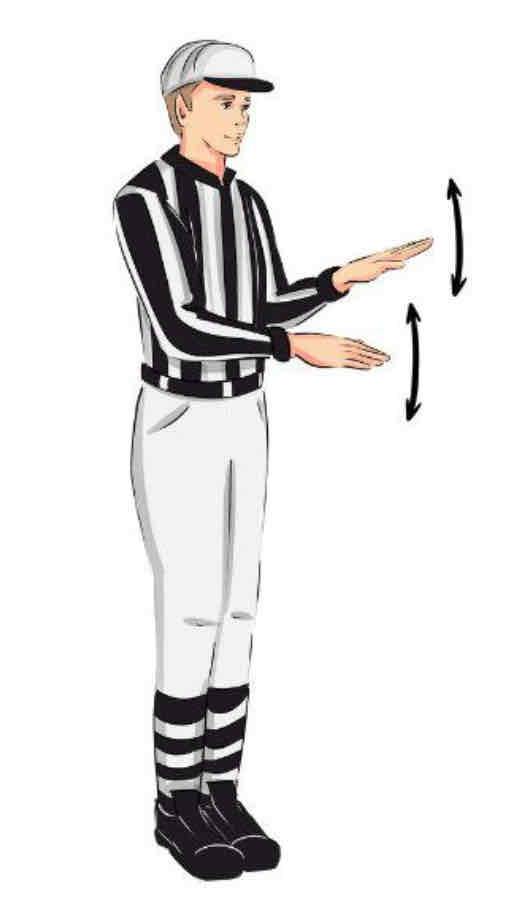
A carrying violation is called when a player is dribbling the basketball and puts their hand under it, then continues dribbling.
To signal a carry, the official will use one of their hands and flip it over from palm up to palm down several times.
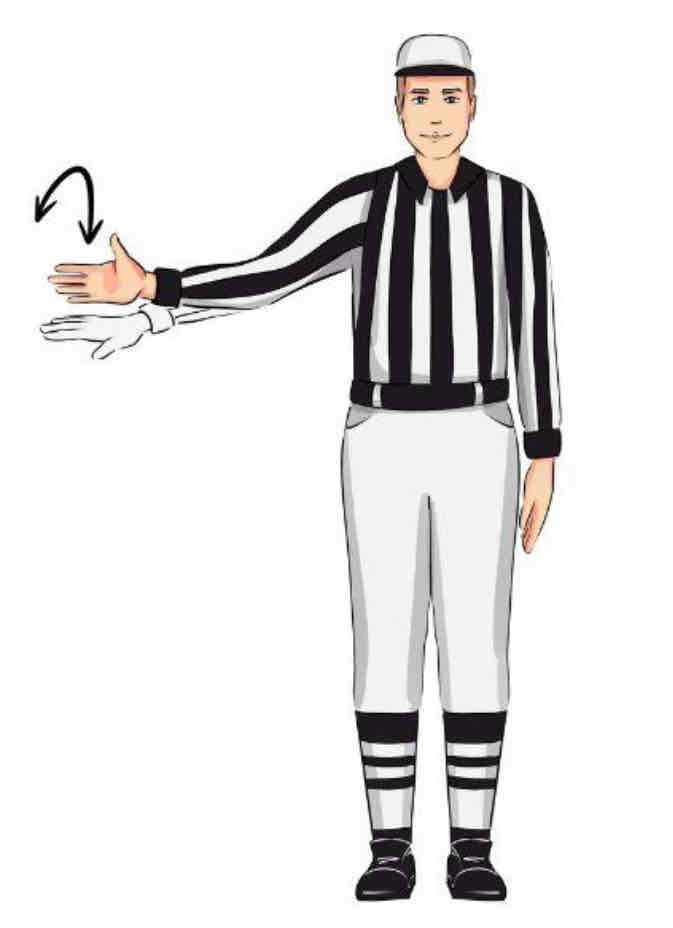
Players are only allowed 3 seconds in the paint -- a 12x16 feet area closest to the basket.
If a player is in the paint for more than 3 seconds, the referee will call a 3-second violation.
The referee will take three fingers, point them down at their side, and then swipe their hand back and forth to signal this violation.
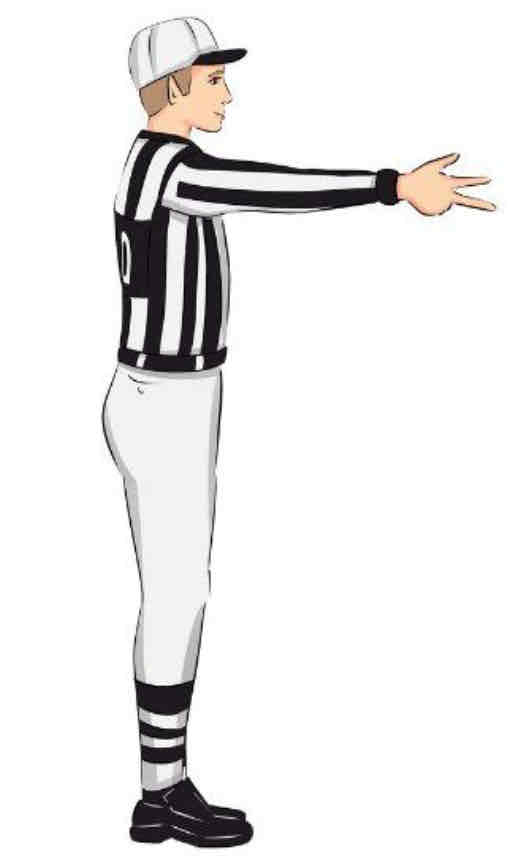
A team has five seconds to throw the ball inbounds when they are taking it out.
If they take longer than five seconds, the referee will call a 5-second violation.
This is a simple signal, as the referee will use one of their hands and put five fingers in the air.
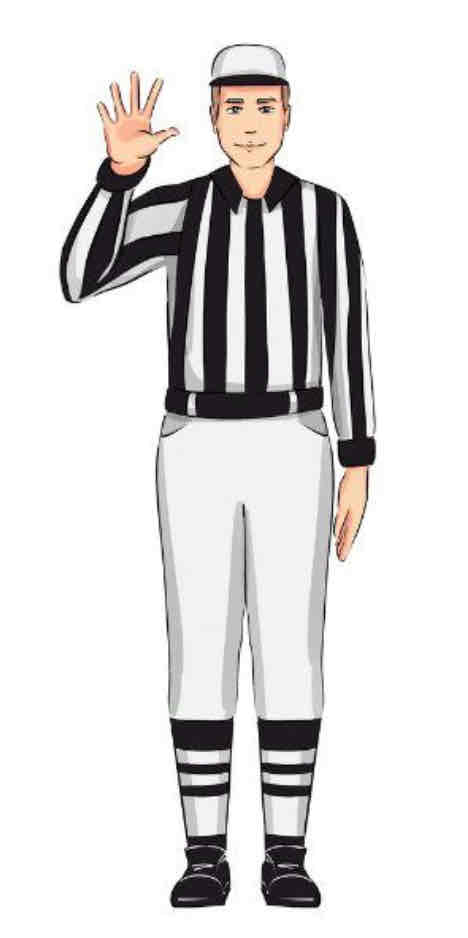
When a team has the ball in the backcourt, they have 8 seconds to get the ball across the half-court line.
If they take longer than the allotted 8 seconds, the referee calls a 8-second violation.
(many younger leagues use 10 seconds instead of 8)
The referee signals this violation by putting eight fingers in the air.
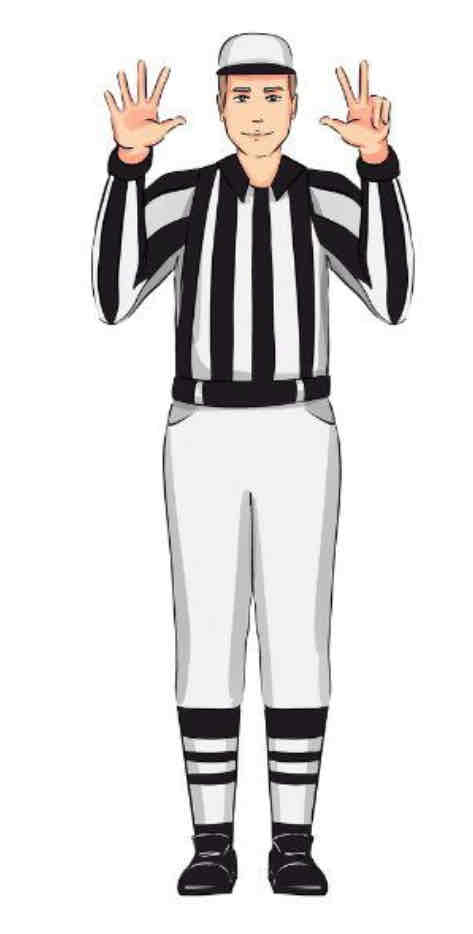
If playing in a league that uses a shot clock, teams will have 24 seconds to take a shot on each possession (some leagues use longer shot clocks).
If a team fails to shoot within this time, the referee will call a 24-second violation.
The referee will use one handed to tap the top of their shoulder on the same arm.
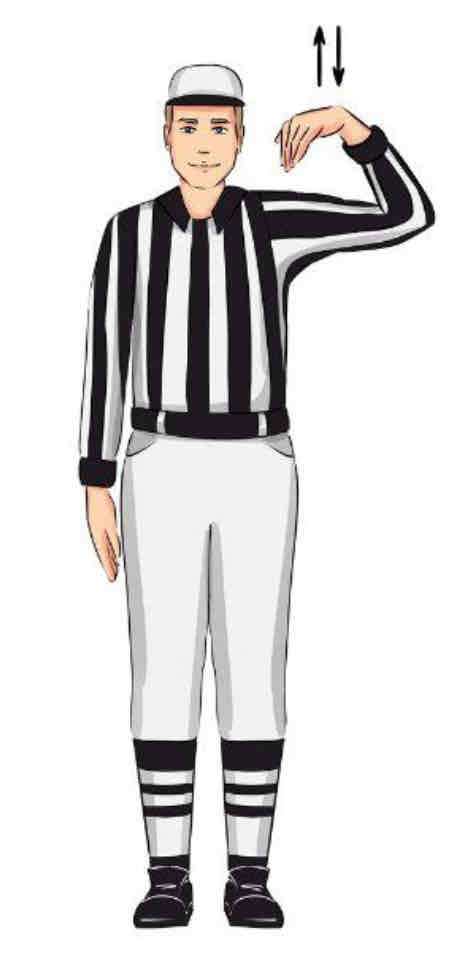
When a team possesses the basketball in the front court, then a player with the ball goes into the backcourt without the defense touching it, an over-and-back violation occurs.
The referee will place their hand out with their palm down and move it back and forth from side view to side like their hand is going over a line.
This is to signal that a player went over the half court line and an over-and-back occurred.
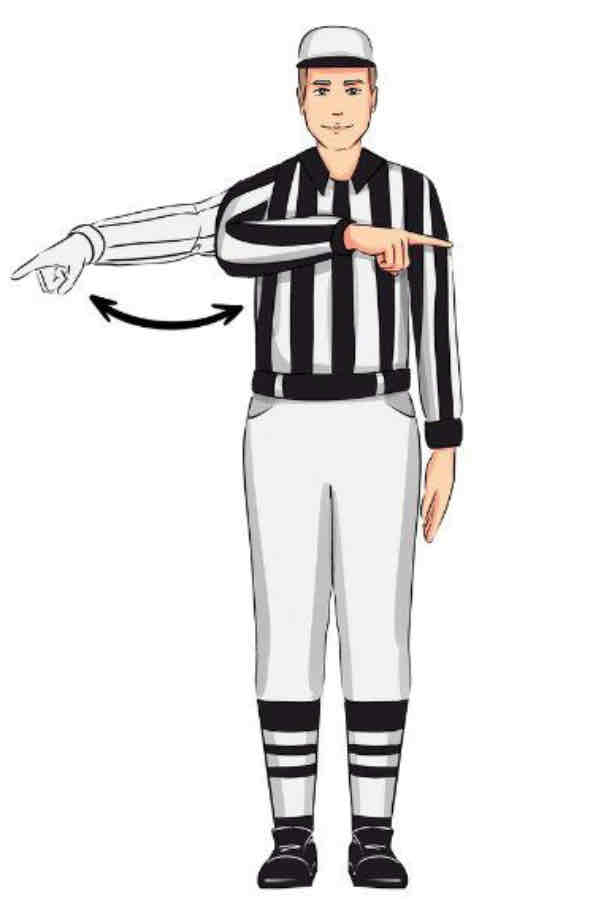
kicking
In basketball, a player may not intentionally kick the basketball.
If they do, the official will blow their whistle.
To signal a kick occurred, the referee will point at their foot.
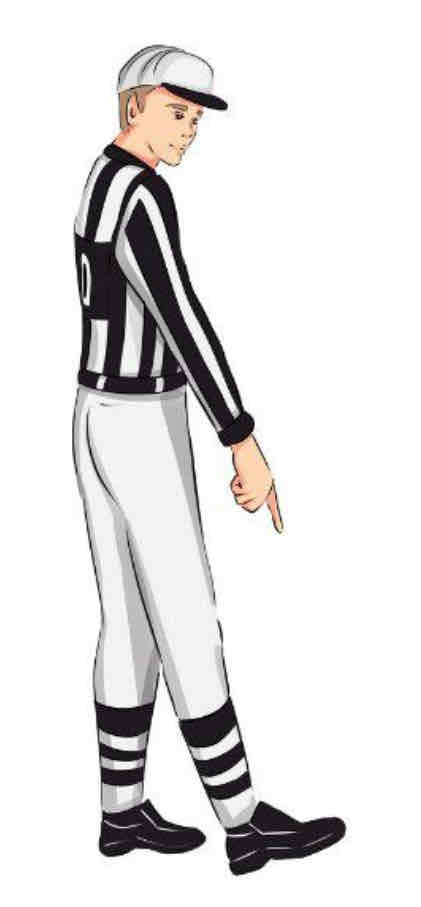
The ball is out of bounds when it touches a line that outlines the
court or anywhere outside of those lines.
It is also out of bounds if it touches a player who is standing outside or on a line.
When the ball goes out of bounds, a referee will signal whose ball it is by pointing toward the basket of the team that will take possession.
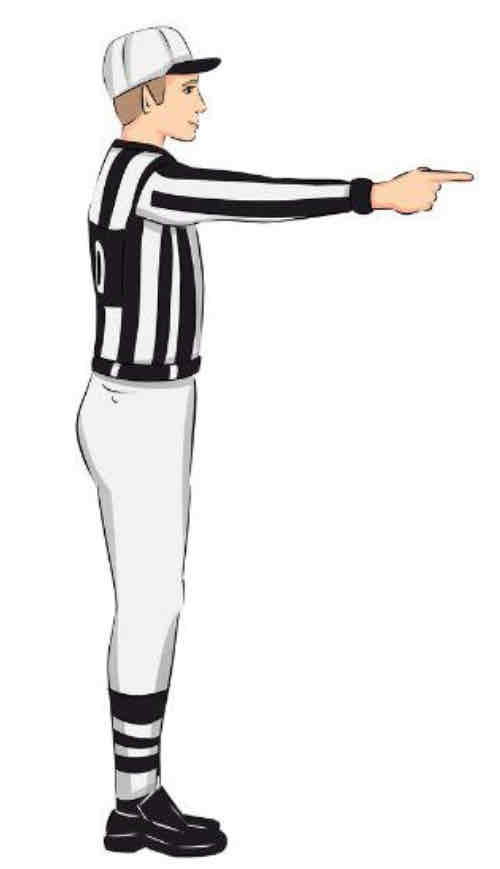
When players from both teams possess the basketball, a jump ball is called
The referee will give two thumbs up above their head to signal that a jump ball has been called.
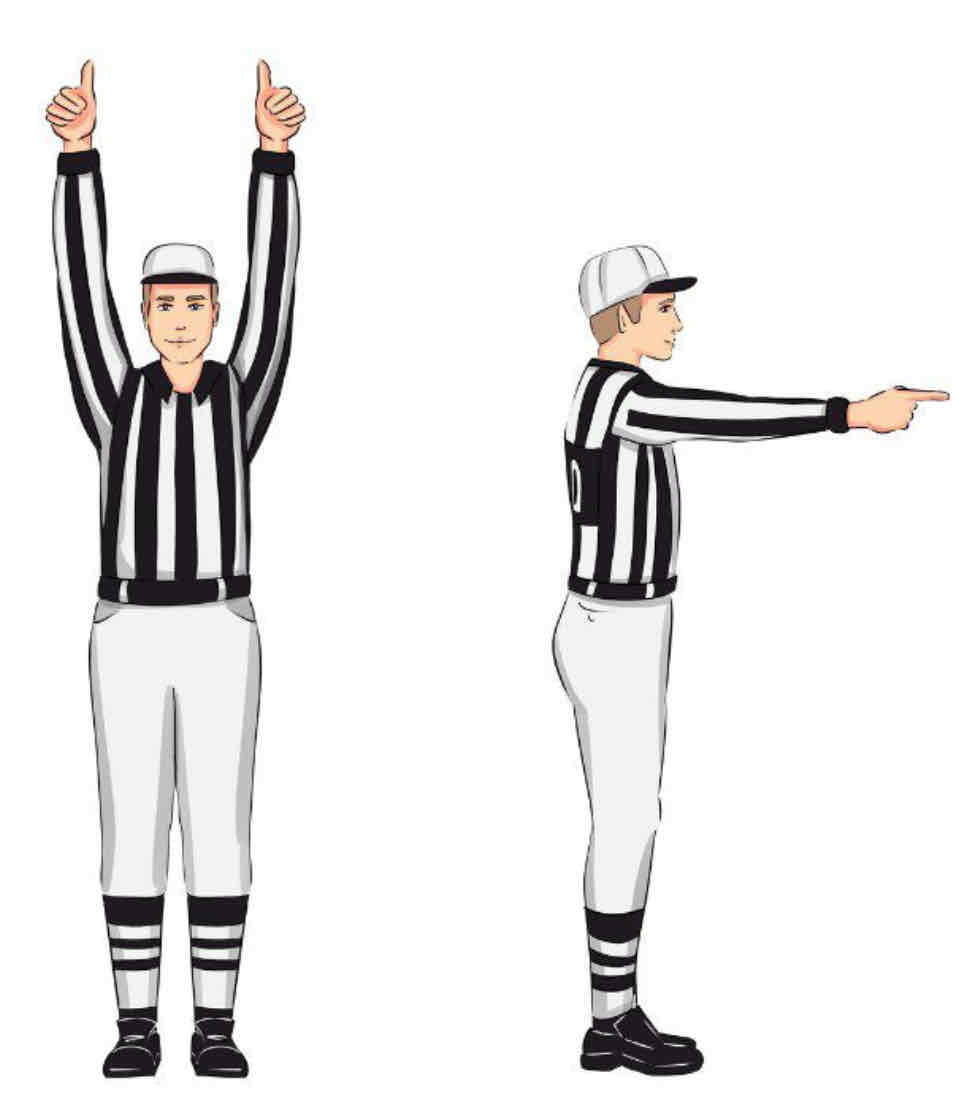
When a defensive player does not have a legal guarding position and impedes the dribbler's progress, a blocking foul occurs.
The referee's signal for blocking is placing both hands on their hips.
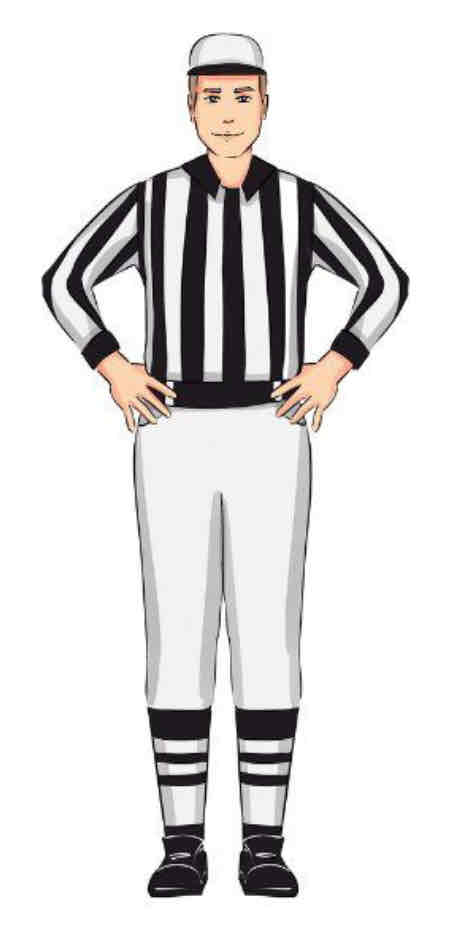
If the defensive player is in a legal guarding position and the offensive player knocks them off of their spot, a charging foul is called.
This is also called a player-control foul.
When the referee signals a charging foul, they make a fist with one hand and "punch" the open palm of their other hand.
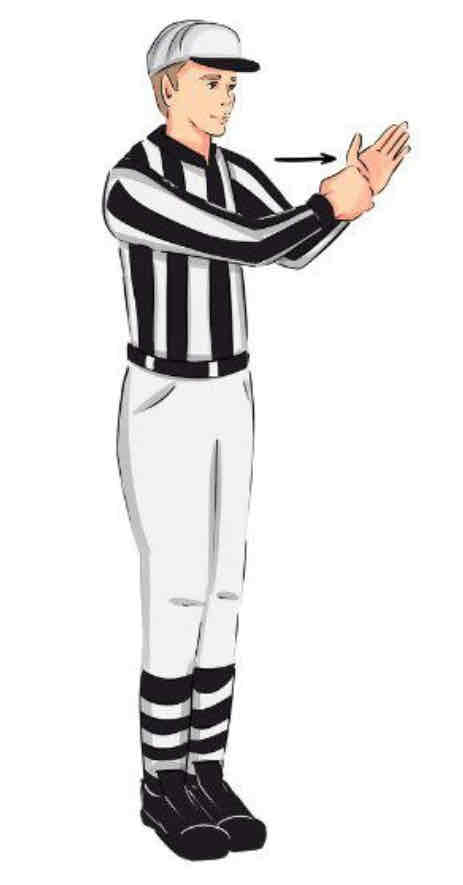
Defensive players are not allowed to limit a ball-handler's ability to move with their hands.
If the defender does limit the movement with their hands, a hand-checking foul is called.
For this signal, the referee will chop one hand across the opposite wrist.
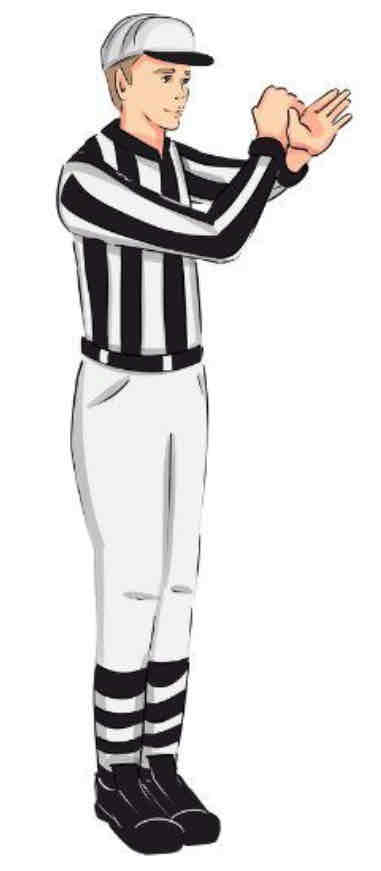
In basketball, you are not allowed to grab another player by the jersey or any of their body parts.
If this happens, a holding foul is called.
The ref's signal for a holding foul is making a fist point with one hand, holding that arm out, and then "grabbing" the wrist with their other hand.
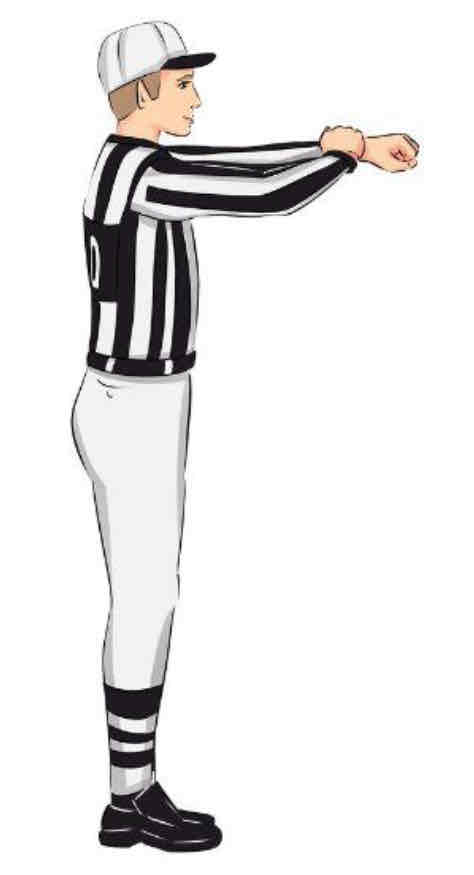
pushing foul
Players are not able to push their opponents in basketball.
If a ref sees a push, they will call a foul.
These fouls happen a lot when two players are going after the same rebound.
In fact, when an 'over the back' foul occurs, you will typically see the referee call it a push.
The signal for pushing is putting two arms out and making a pushing motion with the hands.
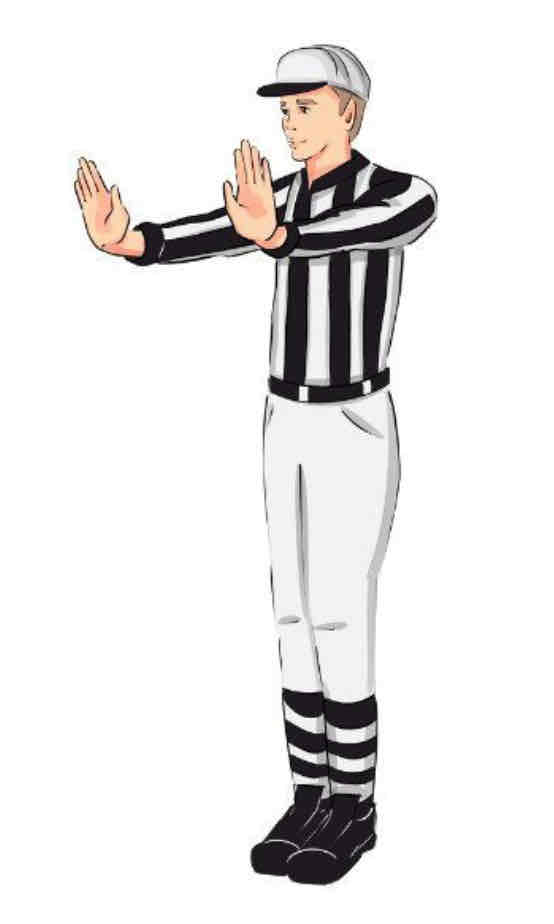
elbow foul
If a player gets aggressive with their elbows and connects with an opponent, a foul will be called.
Sometimes these fouls can be deemed flagrant and can result in two shots and the ball for the team that got hit by the elbow.
The official will signal this type of foul by swinging their elbow.
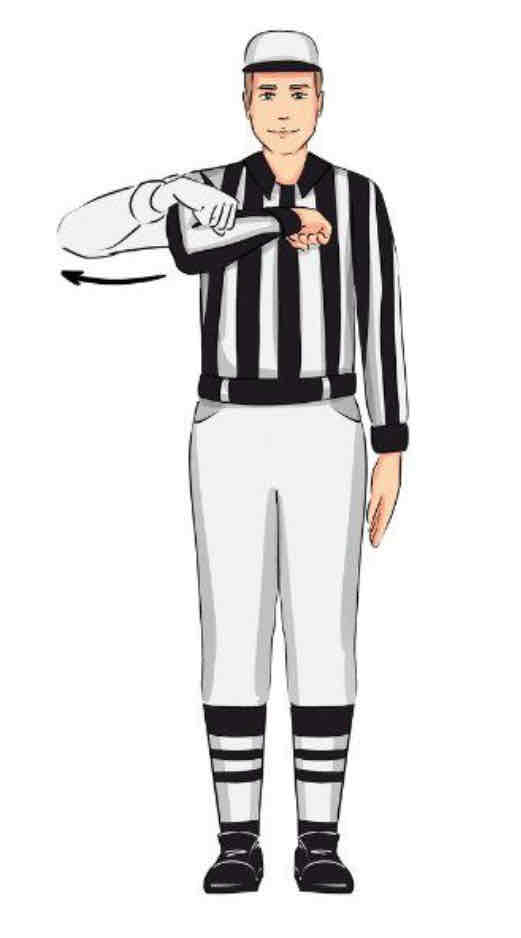
Over the course of the game, fouls happen unintentionally numerous times.
However, if the referee thinks a foul was done purposely or with malicious intent, they can call an intentional foul.
An intentional foul results in two shots for the offensive team and the ball.
The signal for an intentional foul is putting both arms in the air and making an 'X' with them.
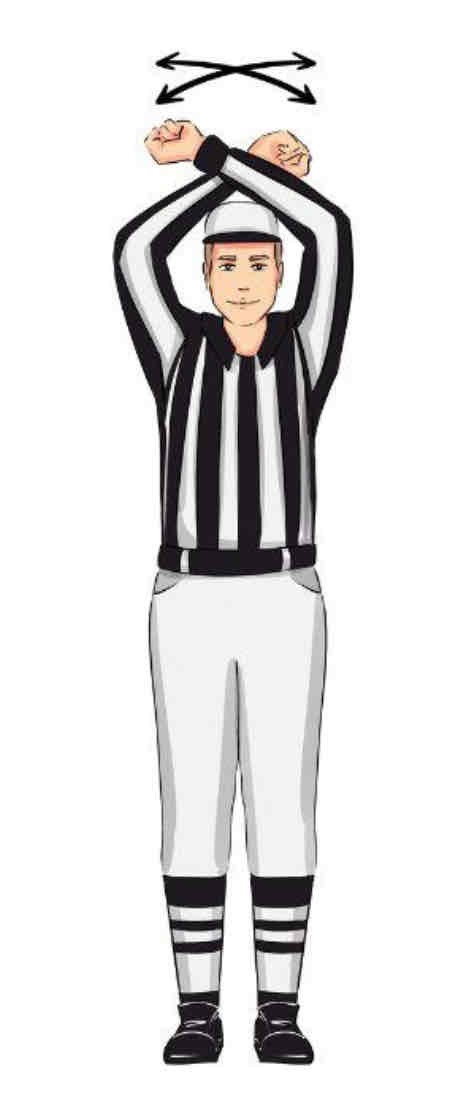
If referees feel like a coach or a player is not conducting themselves properly or having unsportsmanlike behavior, they can call a technical foul.
This foul also results in two shots, plus the basketball.
The signal for a technical foul is taking both hands and making the letter 'T' with them.
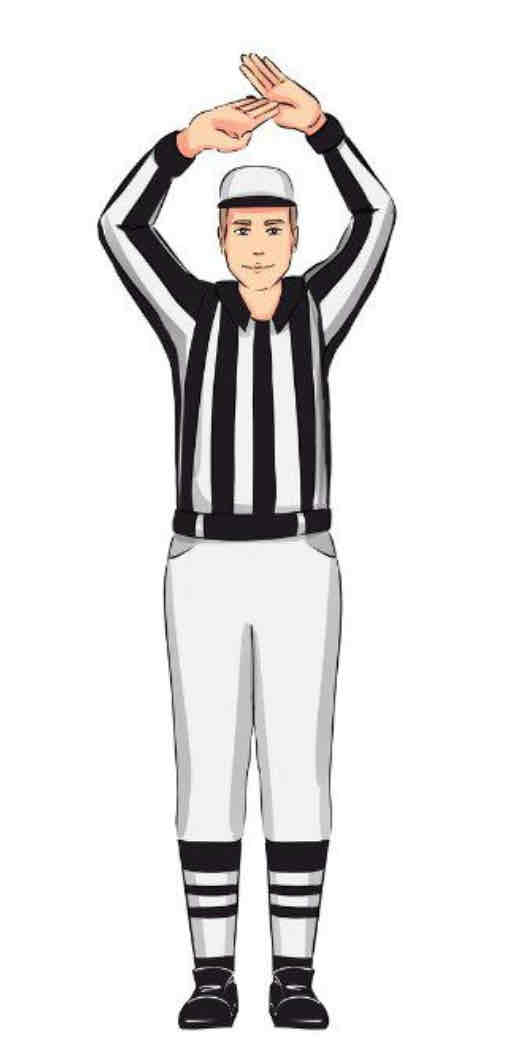
When teams wants to exchange an on-court player with someone on the bench, the coach asks for a substitution.
At the next dead ball, the referee signals the substitution by making an "X" with their arms.
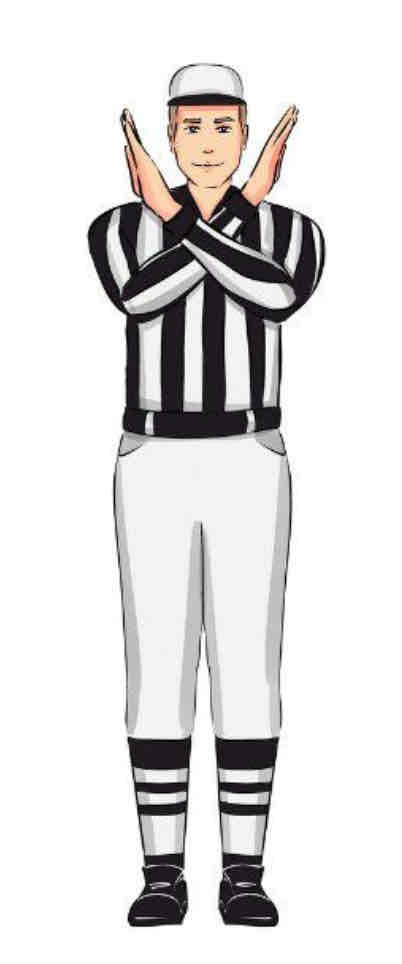
start the clock
In basketball, there are a lot of dead balls where the clock is stopped.
The clock doesn't start again until a player on the floor touches it.
Instead of the timekeeper making a judgment of when to stop the clock, they look for a referee signal to start. The ref will have their hand in the air until it's time to start the clock.
Once that time has come, the referee will drop their arm down and the time will start.
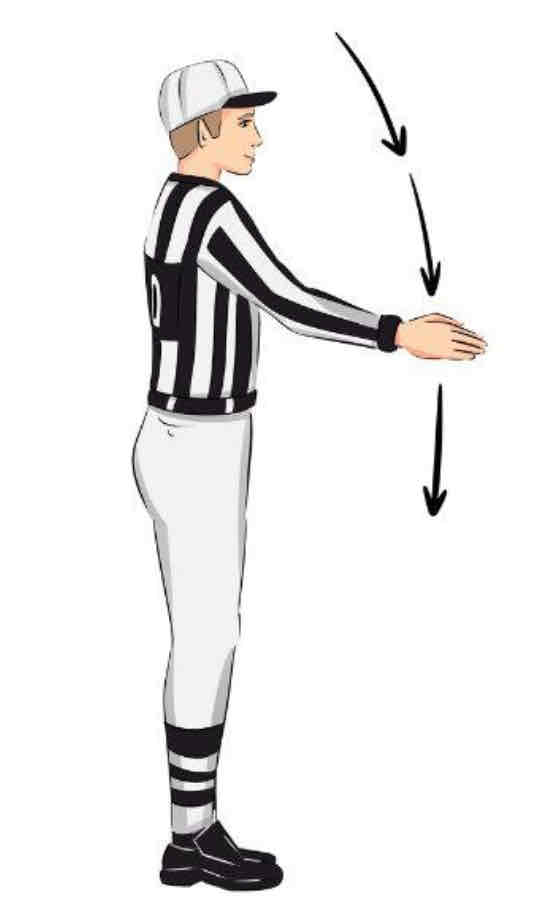
Three-Point Attempt
When a player attempts a three-pointer, the referee has a signal to show that.
They will put one arm straight up in the air to signal a three-point shot is being attempted.

three-point make
If the three-point attempt is made, the official has another signal for that.
They will take both of their arms and place them straight into the air.
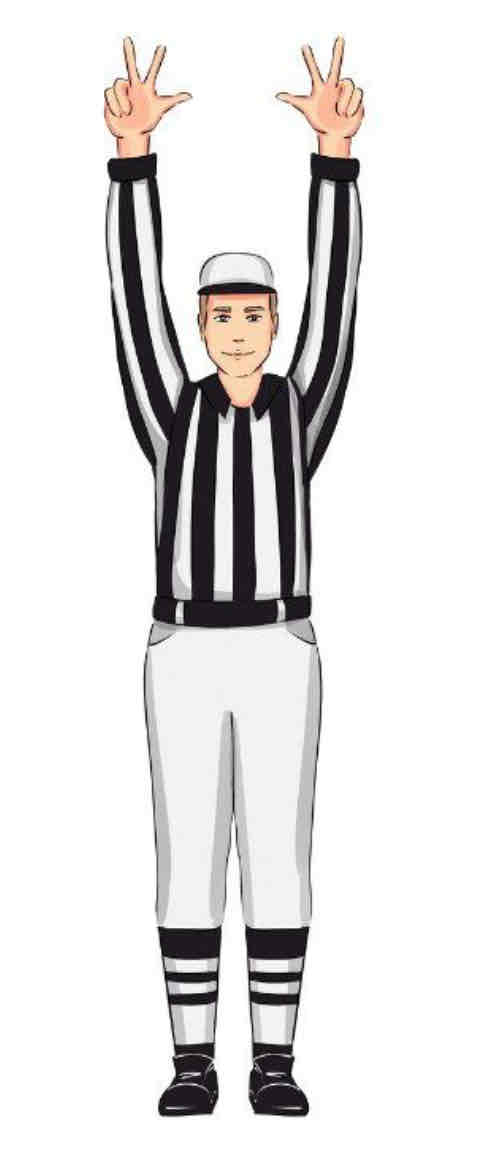
No Basket
Sometimes shots are taken that are immediately after a foul is called or the time has expired.
The official will signal the shot does not count by waving and crossing their arms out in front of them.
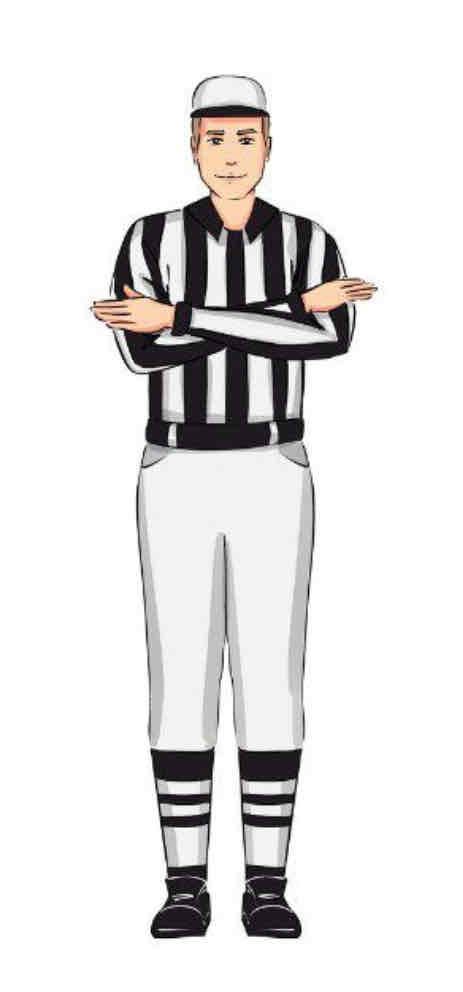
timeout
The other type of timeout is a full timeout.
The signal for this is to stick both arms straight out to the side with fists being made.
